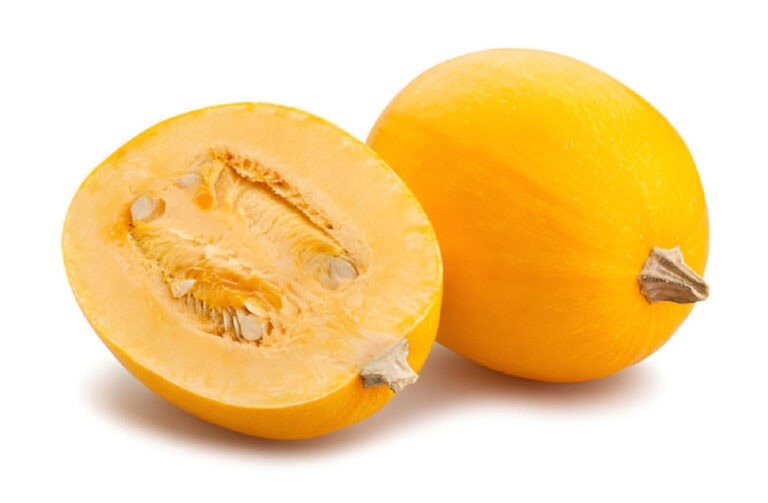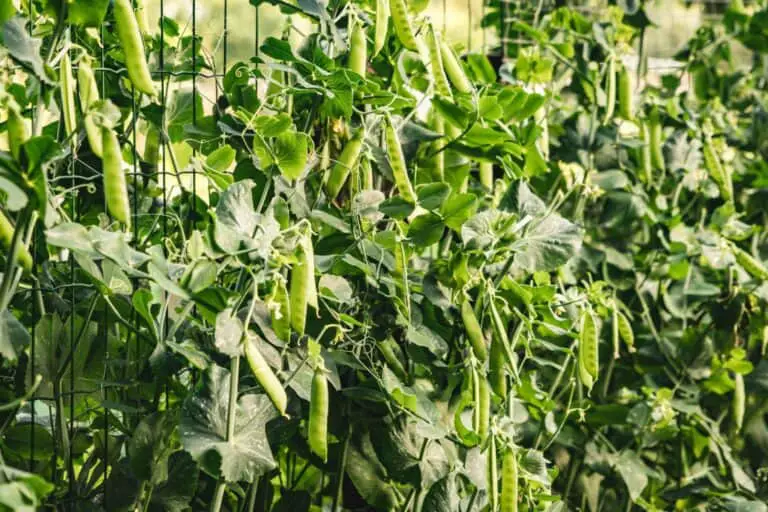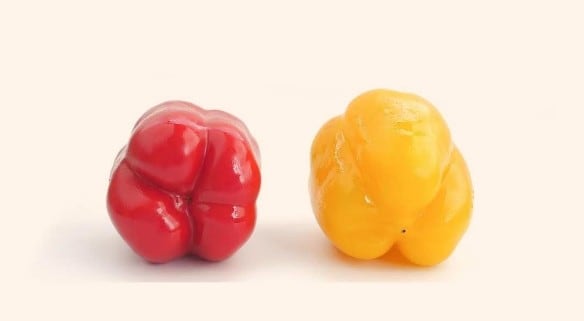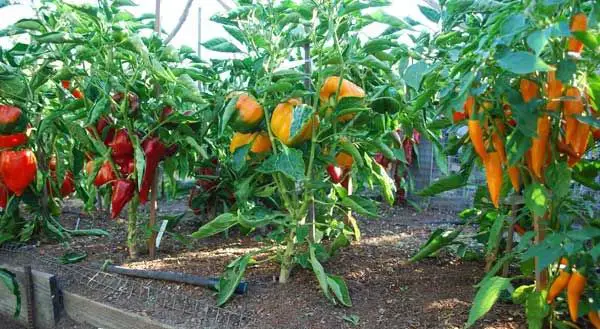Are Persimmons Self Pollinating? How to Hand-Pollinate Persimmons Plant
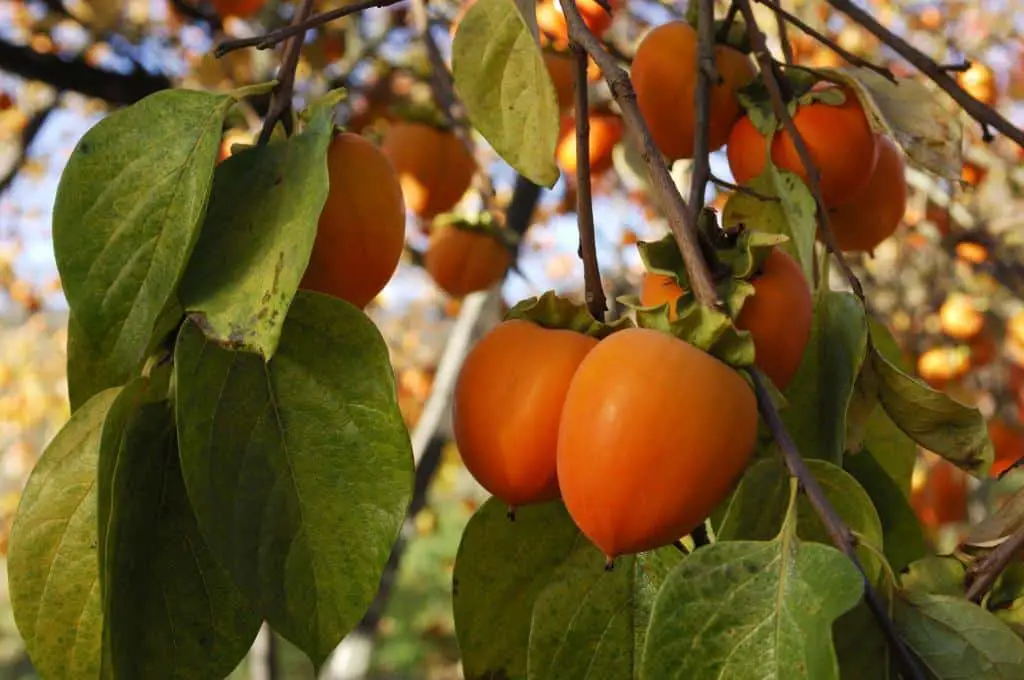
Persimmons, with their vibrant color and sweet flavors, are a delight in orchards and home gardens. One common question among growers is whether persimmons are self-pollinating.
Persimmons are generally self-pollinating, meaning they don’t need an external pollinator to produce fruit. Asian persimmon trees have both male and female flowers on the same tree, known as perfect flowers.
I began my gardening journey by examining my backyard American persimmons. I was eager to know if they could pollinate themselves or if they required assistance from other plants nearby.
If your persimmon tree is not getting enough pollination, don’t worry! We will explore the technique of hand-pollination, which is a secret tool that gardeners use to ensure a plentiful harvest. Hand-pollination involves moving pollen from one flower to another. This helps the tree produce more fruit.
Let’s put on our gardening gloves and explore how persimmons grow with a little help from us.
Persimmon Tree Reproduction Life Cycle

The captivating story of a persimmon tree’s transformation from a seed to a fully grown fruit-bearing entity is one of nature’s wonders. Understanding the intricacies of its reproduction lifecycle reveals the beauty behind each stage. Let’s start this exploration:
Stage 1. Germination
- The lifecycle begins with the germination of persimmon seeds in a suitable environment.
- A delicate seedling emerges, reaching for sunlight and beginning its quest for growth.
Stage 2. Vegetative Growth
- The young tree starts growing a lot, with new leaves and a strong frame.
- During this stage, the tree focuses on developing a strong root system and branches.
Stage 3. Flowering
- The persimmon tree is stunning when it blooms with many flowers. It’s signaling readiness for reproduction.
- At this point, pollination steps into the spotlight. It plays a key role in shaping the tree’s future.
Stage 4: Fruit Development
- Following successful pollination, the tree invests its energy in nurturing the growing fruits.
- The colorful flowers become tasty persimmons. They are ready to be picked, finishing the beautiful cycle.
The lifecycle of the persimmon tree relies on nature’s processes and pollination.
Understanding Persimmon Pollination
To have lots of persimmons, it’s important to know how they get pollinated. Persimmons are unlike many other fruit trees. They come in two main varieties: astringent and non-astringent.
This difference is critical to pollination. Some persimmon types self-pollinate. Others need cross-pollination from another tree to set fruit.
When it comes to pollinating persimmons, insects are great. You cannot say enough good things about them. Bees and other pollinators are important. They move pollen between the flowers. This leads to fruit.
Additionally, it becomes apparent that certain environmental factors also influence successful pollination. Factors such as temperature, humidity levels, and even wind affect how this fruit tree is pollinated.
When we grasp these details, we can appreciate nature’s wonders. We can also learn to grow persimmons well. If you have one tree or many, knowing about persimmon pollination helps you get more fruit.
Persimmon Varieties: Self-Pollinating vs Non-self-Pollinating Types
When it comes to persimmon varieties, a key distinction lies in their pollination requirements. Self-pollinating persimmons, such as the Fuyu and Gosho varieties, are able to produce fruit without the need for a separate pollinator tree. These trees are great for home gardeners with limited space or those who want low-maintenance fruit.
On the other hand, non-self-pollinating types, like the Hachiya and Saijo varieties, require cross-pollination from another compatible persimmon tree in order to set fruit.
Self-pollinating and non-self-pollinating persimmon varieties affect gardeners and commercial orchards.
As a grower, knowing these differences will help you make better choices for planting and orchard setup to optimize pollination. Gardeners and growers can increase biodiversity and fruit production by considering each persimmon variety’s unique traits.
How do I identify if My Persimmons Need Hand-Pollination?
Spotting the need for hand-pollination in your persimmon tree is an art. The tree gives subtle clues. Let’s dive into the steps to decipher if your tree is signaling for a helping hand:
Post-Flowering Inspection:
- After the blossoms have graced your persimmon tree, observe for signs of fruit development.
- If the tree is non-self-pollinating and you notice a scarcity of growing fruit, it’s time to investigate further.
Fruit Set Analysis:
- Examine the number of fruits forming on the tree. A limited fruit set may indicate inadequate pollination.
- Inspect thoroughly during this critical post-flowering period. It helps you gauge the success of natural pollination.
Pollinator Activity Assessment:
- Evaluate the level of pollinator activity around your persimmon tree.
- A lack of bees or other pollinators may contribute to insufficient pollination, requiring intervention.
Weather Conditions Impact:
- Consider external factors like adverse weather conditions during the flowering phase.
- Heavy rain or extreme temperatures can hinder natural pollination, requiring hand-pollination.
By noticing these natural signs, you can tell if your persimmon tree needs extra care for a good harvest.
How to Hand-Pollinate Persimmons
Spotting the need for hand-pollination in your persimmon tree is an art. The tree gives subtle clues. Let’s dive into the steps to decipher if your tree is signaling for a helping hand:
Post-Flowering Inspection:
- After the blossoms have graced your persimmon tree, observe for signs of fruit development.
- If the tree is non-self-pollinating and you notice a scarcity of growing fruit, it’s time to investigate further.
Fruit Set Analysis:
- Examine the number of fruits forming on the tree. A limited fruit set may indicate inadequate pollination.
- Inspect thoroughly during this critical post-flowering period. It helps you gauge the success of natural pollination.
Pollinator Activity Assessment:
- Evaluate the level of pollinator activity around your persimmon tree.
- A lack of bees or other pollinators may contribute to insufficient pollination, requiring intervention.
Weather Conditions Impact:
- Consider external factors like adverse weather conditions during the flowering phase.
- Heavy rain or extreme temperatures can hinder natural pollination, requiring hand-pollination.
By noticing these natural signs, you can tell if your persimmon tree needs extra care for a good harvest.
How to Hand-Pollinate Persimmons
Now, let us talk about hand-pollination, a method that makes sure fruit sets on plants that can pollinate themselves.
1. Tools You’ll Need:
Gather your tools before embarking on the hand-pollination journey. You’ll need a small, soft brush (like a paintbrush) to transfer pollen, gloves, and a keen eye for observation.
2. Choose the Right Time:
Timing is crucial for hand-pollination. Aim for a clear, dry day when the persimmon flowers are fully open. This is usually in late spring or early summer, depending on your region.
3. Identify male and female flowers:
Persimmon trees have separate male and female flowers. Male flowers typically have visible stamens, while female flowers sport a small, rounded fruit at the base. Identify these before proceeding.
4. Transfer Pollen:
Gently dab the brush into the stamen of a male flower, collecting the yellow pollen. Carefully transfer the pollen to the stigma of a female flower. Repeat this process for several flowers to increase the chances of successful pollination.
5. Be patient.
After hand-pollination, nature takes its course. Keep an eye on your persimmon tree as it begins to bear fruit. Proper watering and care during this period are crucial for the development of healthy persimmons.
Table: Common Persimmon Varieties and Their Pollination Characteristics
| Variety | Pollination Type |
| Fuyu | Self-Pollinating |
| Jiro | Self-Pollinating |
| Hachiya | Requires Cross-Pollination |
| Saijo | Requires Cross-Pollination |
| Tamopan | Requires Cross-Pollination |
Tips for Maximizing Pollination: Timing, Tools, and Best Practices
Timing is crucial when it comes to maximizing the pollination of persimmon plants. Pollination can be improved by watching the blooming period. You should make sure pollinators are present. Extreme temperatures or rainfall can disrupt the process, so be aware of the local weather.
Hand-pollination can be improved by using soft paintbrushes or cotton swabs to apply pollen precisely. Gently transferring pollen between flowers can improve fruit set and yield in areas with low natural pollination.
Implementing best practices is one such practice. It includes things like cross-pollinating persimmon varieties. It can make the pollination process better and increase harvests.
In Conclusion
Your persimmons may or may not be self-pollinating. But, understanding pollination well is key to a good harvest. You can ensure your persimmon tree yields tasty fruit. Do this by exploring hand-pollination and choosing good kinds. Remember, the art of cultivation is both a science and a joy—happy growing!
FAQs
Are all persimmon trees self-pollinating?
No, not all persimmon trees are self-pollinating. Some types, like Fuyu and Jiro, can pollinate themselves. Others need cross-pollination to make fruit. It’s essential to know the specific variety you have and its pollination needs.
Can I rely on natural pollinators for my persimmon tree?
Yes, bees can help persimmon pollination. This is true for non-self-pollinating varieties. However, in cases of low pollinator activity or isolated trees, hand-pollination may be necessary for optimal fruit set.
What is the best time to hand-pollinate persimmons?
The ideal time to hand-pollinate persimmons is during the flowering period, typically in late spring. Choose a calm, dry day when the flowers are fully open. Gently transfer pollen between flowers using a small brush or cotton swab.
Can I mix persimmon varieties for cross-pollination?
Yes, planting different persimmon varieties near each other can help cross-pollination. This will improve fruit yield. Make sure the varieties bloom together to transfer pollen. Cross-pollination can be a natural way to boost fruit production in persimmon orchards.
Do all persimmon varieties require hand-pollination?
No, not all persimmon varieties require hand-pollination. Some, like Fuyu and Jiro, are self-pollinating, meaning they can produce fruit without external assistance. However, it’s crucial to know the specific pollination requirements of your persimmon tree to ensure optimal fruit development.
Can persimmon trees change their pollination needs over time?
Persimmon trees maintain consistent pollination requirements throughout their lifespan. A variety that self-pollinates or needs cross-pollination will remain so. Understanding the tree’s pollination needs ensures proper care and fruit production.
Can I rely solely on self-pollination for a bountiful persimmon harvest?
For self-pollinating persimmon varieties, natural pollination may be sufficient. However, even self-pollinating trees can benefit from increased pollinator activity. Optimize pollination conditions or hand-pollinate for a good harvest.

